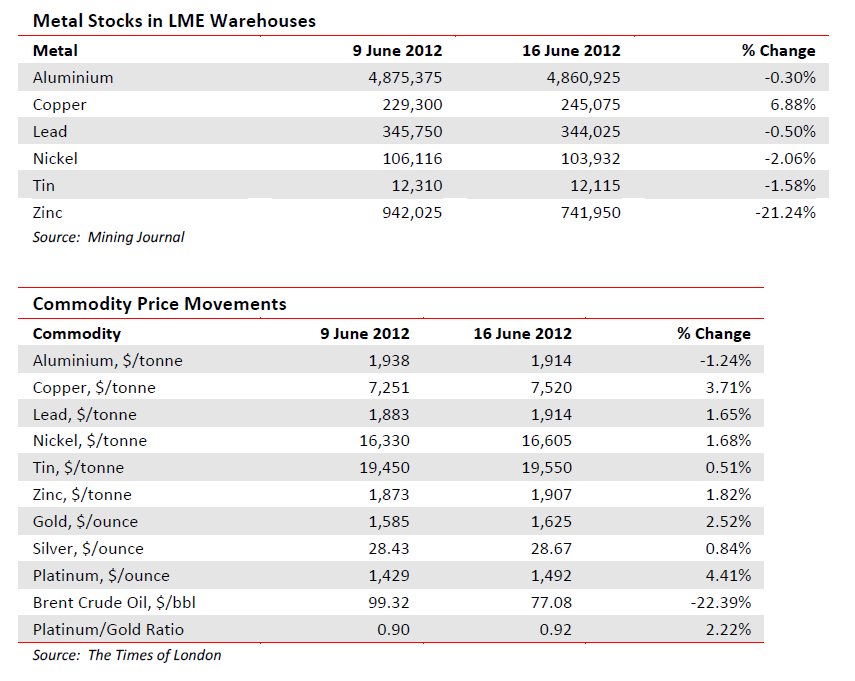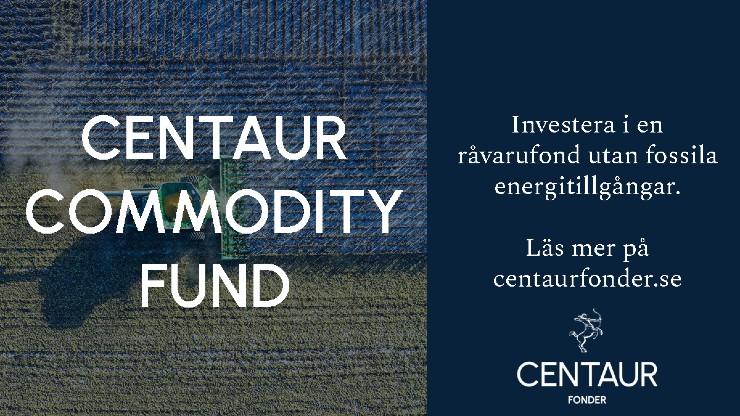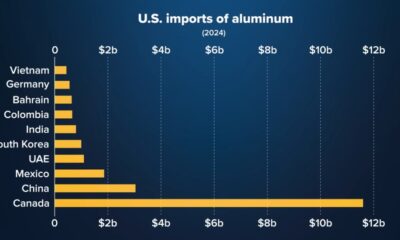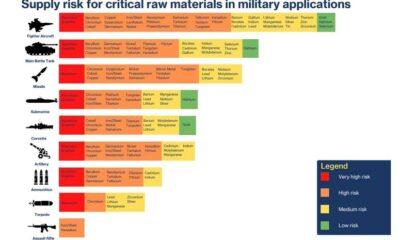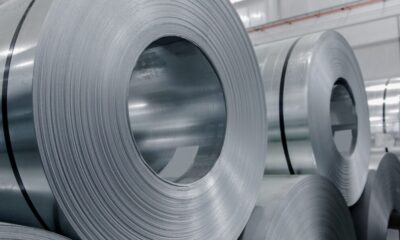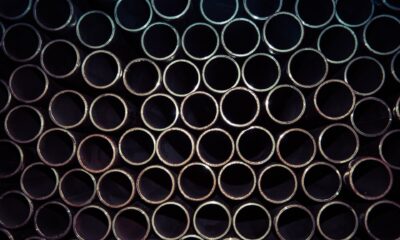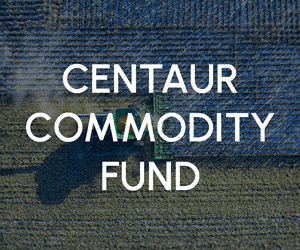Nyheter
The Aluminium Producers make a case
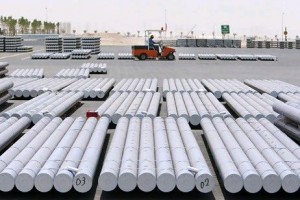 Whilst warehouse stocks scarcely stirred, prices for choice moved up, not much, but up. The involved producers all talked a good game. Rio Tinto said we shall face a supply deficit in aluminium in 2013. Alcoa says we are going to make car bodies out of that lightweight metal. Barclays Bank says commodity prices are in ‘no mans land’. S&P says there are rough times ahead for nickel and zinc. Who to believe and does it matter? Good thing it is not serious. Aluminium: just to remind, the world’s largest producers are:
Whilst warehouse stocks scarcely stirred, prices for choice moved up, not much, but up. The involved producers all talked a good game. Rio Tinto said we shall face a supply deficit in aluminium in 2013. Alcoa says we are going to make car bodies out of that lightweight metal. Barclays Bank says commodity prices are in ‘no mans land’. S&P says there are rough times ahead for nickel and zinc. Who to believe and does it matter? Good thing it is not serious. Aluminium: just to remind, the world’s largest producers are:
Rio says the high cost capacity cuts this year will give us a supply deficit in 2013. There has been zero growth on the supply side for some years, only low energy cost producers are in with a shout and the high cost ones are baling out.
Alcoa took 500,000t out at the start of this year, Norsk Hydro did 180,000t and Rio is also cutting back. But this is a 40Mtpa market with almost 5Mt in LME warehouses. Now, Alcoa is building a 740,000 tpa smelter in Saudi Arabia and China, 40% of world metal production, is producing regardless.
Aluminium Car Bodies. Not a new idea this. The reason why most units of Britain’s iconic Land Rover, first produced in 1948, are still running is that they had aluminium bodies. Its availability arose from the scrapping of wartime aeroplanes.
Not only was it cheap, it was, and still is, more malleable and lighter than steel. Rustproof, too. Then it became expensive when fuel was cheap and weight not a consideration. So steel took over. Now fuel is expensive and aluminium is relatively cheap again. Alcoa (No 2 in the metal’s production) says aluminium is making a comeback and its demand in the automobile market will double by 2025. Current demand is c 11.5 Mt out of a total usage of 40Mt or almost 30%. The other end uses will not go away so this could become an extra 12Mtpa. We presently have an oversupplied market, but the lead time to new mined and refined production can be up to 10 years. The current price languishes below $2000/t having seen almost $4000/t in 1990 and $3000/t in the heady 2006-9 period. Neither might this move please the carmakers if their units last 40 years instead fo 20. Gnashing of teeth, too, from the zinc miners whose major outlet is galvanising steel to rustproof it. This is one to watch.
Nickel, too, is in oversupply so mixed reaction to news of what might become a major mine in South Africa’s Bushveld Complex, home to most of the world’s platinum. Announced by AIM-quoted URU Metals (URU.L 5.25; Hi-Lo 11.0p-4.5p), they speak of 25,000 tpy metal at a price (quotes Mining Weekly) of almost $4/lb including CAPEX. That is about $8500/t compared with a current $16,600/t, itself a long way from historic highs. Buoyed by this they speak of an IRR of 25.7% and a 3.8 year payback. URU’s two partners are South Africa Nickel and BEE group UNMEX.
We were treated to mixed views on Zinc this week, the bullish one from Selwyn Resources which has a mega, low grade deposit in Canada’s Yukon Territory. The Selwyn story is based on the rapid rate of closure of some historic, high grade mines, particularly in Canada and the dearth of replacements, which it intends to rectify. As ever, the Chinese position is they key. That country is the largest metal producer (31% compared with No 2 Peru at 12%), consumer (43% vs the USA, next at 7%) and 3rd largest importer at 10% following Germany and USA. It shows little sign of abating but this has not reduced the near record level of warehouse stocks. Mining of zinc outside China has become two-way traffic. Anglo and Exxaro are exiting. The latter has completed the R931M ($110M) sale of its Namibian, Rosh Pinah mine to Glencore. That company is already the most potent force in zinc marketing. Should its merger with Xstrata take place, the combined group would control c.15% of world smelter production. That alone does not signify success; ask Rio with its grip on the aluminium market.
The London Metal Exchange, the oldest and largest of its type, has been bought by Hong Kong Exchanges and Clearing. They paid £1.4bn in a deal concluded Friday June 15th 2012. Now it should be upwards and onwards, with warehouses and open trading in China. Whilst the LME is big in physical metals, through its international network of warehouses, it also transacts about 20% of the futures business. The Chinese have always been a bit dubious of futures, considering them speculative. Wait until they get the hang of it.
[hr]
About David Hargreaves
David Hargreaves is a mining engineer with over forty years of senior experience in the industry. After qualifying in coal mining he worked in the iron ore mines of Quebec and Northwest Ontario before diversifying into other bulk minerals including bauxite. He was Head of Research for stockbrokers James Capel in London from 1974 to 1977 and voted Mining Analyst of the year on three successive occasions.
Since forming his own metals broking and research company in 1977, he has successfully promoted and been a director of several public companies. He currently writes “The Week in Mining”, an incisive review of world mining events, for stockbrokers WH Ireland. David’s research pays particular attention to steel via the iron ore and coal supply industries. He is a Chartered Mining Engineer, Fellow of the Geological Society and the Institute of Mining, Minerals and Materials, and a Member of the Royal Institution. His textbook, “The World Index of Resources and Population” accurately predicted the exponential rise in demand for steel industry products.
Nyheter
Uppgången i oljepriset planade ut under helgen
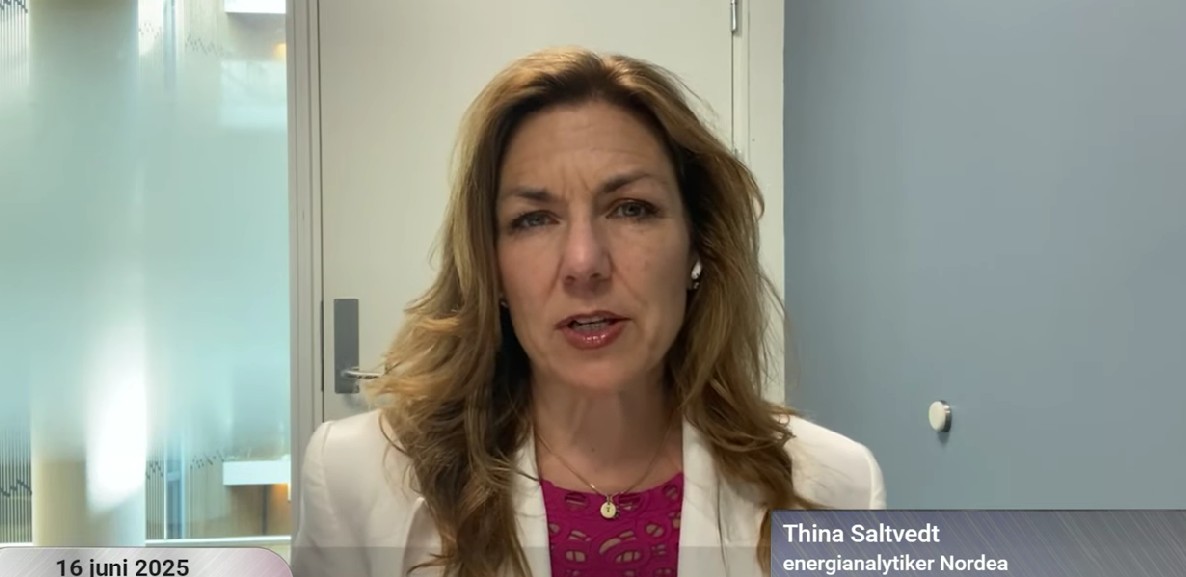
Oljepriset gick upp direkt när Israel attackerade Iran förra veckan, men under helgen har prisutvecklingen planat ut trots att konflikten tilltagit. Thina Saltvedt, energianalytiker på Nordea, kommenterar utvecklingen och vad som kan hända framåt.
Nyheter
Låga elpriser i sommar – men mellersta Sverige får en ökning
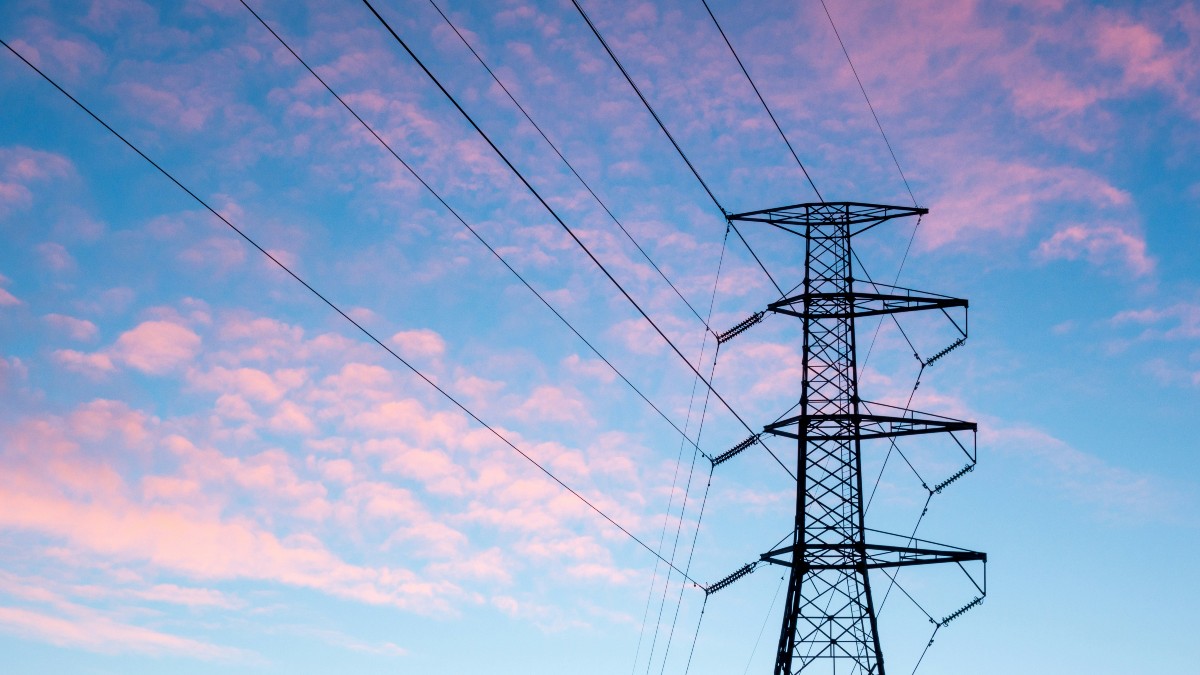
Snittpriset på el väntas landa på cirka 30 öre per kilowattimme i sommar – i nivå med fjolåret. Men i elområde SE3, där bland annat Stockholm ingår, väntas priserna stiga med 70 procent till följd av att kärnkraftreaktorn Oskarshamn 3 står still. Samtidigt pressar höga vattennivåer ner priserna i norra Sverige. Det visar Bixias elprisprognos för sommaren.

Väderprognoserna pekar på normala förhållanden i Skandinavien. Men det blöta vädret under förra hösten och vintern har fyllt vattenmagasinen rejält, vilket bidrar till låga och stabila elpriser under juni till augusti.
– Att vi går in i sommaren med välfyllda vattenmagasin borgar för riktigt låga elpriser, särskilt i norr. I kombination med låg elförbrukning minimeras risken för några större prischocker i sommar, säger Johan Sigvardsson, analytiker på Bixia.
Ner i norr, upp i syd
Det ovanligt stora vattenöverskottet både i Sverige och Norge fortsätter att pressa priserna norra Sverige. I SE1 och SE2 väntas elpriserna landa på 13–14 öre per kilowattimme, jämfört med 18 öre i fjol.
I mellersta Sverige, elområde SE3, väntas elpriset i stället stiga till cirka 32 öre per kilowattimme, vilket är 70 procent högre än förra sommaren. Orsaken är att underhållet av kärnkraftsreaktorn Oskarshamn 3 förlängts till den 15 augusti, vilket minskar den planerbara elproduktionen.
Även SE4, längst i söder, påverkas av den reducerade kärnkraftsproduktionen, då kopplingen till kontinentens högre elpriser blir större. Här väntas elpriset landa på cirka 50 öre per kilowattimme vilket är i linje med fjolåret.
– Om inte underhållet i Oskarshamn förlängts hade vi för ovanlighetens skull haft full kärnkraftsproduktion i både Sverige och Finland i sommar. Nu får vi istället ett underskott som höjer priserna i mellersta och södra Sverige, säger Johan Sigvardsson.
Under sommaren väntas också många så kallade minustimmar – timmar med negativt elpris – framför allt mitt på dagen när solkraften är som mest effektiv.
– En riktigt het sommardag kan solkraften stå för 80-90 procent av det tyska elbehovet under dagtid. Då blir ankkurvan djup och vi får negativa priser, vilket såklart pressar ner dygnsmedelpriset och gör att vi i Norden kan importera billigt, säger Johan Sigvardsson.
Europa kan pressa upp priserna till hösten
Samtidigt visar prognoser att södra Europa går mot en varm och torr sommar, vilket kan påverka elmarknaden längre fram.
– Hetare väder ökar behovet av luftkonditionering och elförbrukningen stiger. Det innebär att gaslagren inte fylls på i samma takt under påfyllnadssäsongen och efterfrågan i höst lär öka, vilket kan driva upp elpriserna i Europa till hösten och påverka även oss i Sverige, säger Johan Sigvardsson.
Elpriset juni-augusti 2025 jämfört med 2024
| Elområde | 2024 (utfall) | 2025 (prognos) |
| Systempris | 27 öre | 29 öre |
| SE1 | 18 öre | 14 öre |
| SE2 | 18 öre | 13 öre |
| SE3 | 19 öre | 32 öre |
| SE4 | 51 öre | 50 öre |
Nyheter
Stor uppsida i Lappland Guldprospekterings aktie enligt analys

Impala Nordic har gjort en uppdragsanalys på Lappland Guldprospektering, som noterades på Spotlight förra hösten, där man ser en rejält uppsida i aktien.
Lappland Guldprospektering är ett svenskt bolag verksamt inom guldprospektering med fokus på att utveckla och bedriva guldbrytning i större skala i Sverige och övriga Norden. Bolaget har som målsättning att bli en betydande guldproducent, där bolagets nyckelpersoner besitter en mångårig erfarenhet av utveckling och drift av gruvor över hela världen.
Bolaget drivs med väldigt slimmad kostnadsbas, som understiger 1 miljon kronor per kvartal. Således har bolaget en betydande runway med nuvarande kassa, som uppgick till cirka 18 miljoner kronor i utgången av Q1 2025.
”Vi ser det som möjligt att Bolaget kan etablera en gruvverksamhet i huvudprojektet Stortjärnhobben inom 3–4 år, vilket skulle innebära kassaflöden under många år framöver. Om Bolaget lyckas med sitt mål att klassificera en mineralresurs på 500 000 troy ounce (uns) ser vi potential till betydande uppvärdering baserat på värderingen av bolag som varit i liknande skede. Vi bedömer att uppsidan motsvarar ett börsvärde på minst 500 MSEK, drygt 400 % över dagens värdering.”
-

 Analys4 veckor sedan
Analys4 veckor sedanBrent steady at $65 ahead of OPEC+ and Iran outcomes
-

 Nyheter3 veckor sedan
Nyheter3 veckor sedanUSA slår nytt produktionsrekord av naturgas
-

 Analys3 veckor sedan
Analys3 veckor sedanAll eyes on OPEC V8 and their July quota decision on Saturday
-

 Analys4 veckor sedan
Analys4 veckor sedanA shift to surplus will likely drive Brent towards the 60-line and the high 50ies
-

 Nyheter2 veckor sedan
Nyheter2 veckor sedanBrookfield ska bygga ett AI-datacenter på hela 750 MW i Strängnäs
-

 Nyheter2 veckor sedan
Nyheter2 veckor sedanStor uppsida i Lappland Guldprospekterings aktie enligt analys
-
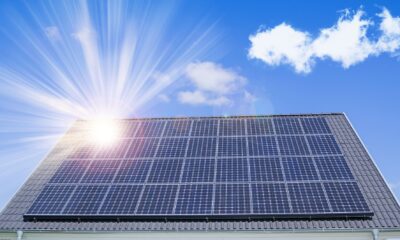
 Nyheter3 veckor sedan
Nyheter3 veckor sedanSommaren inleds med sol och varierande elpriser
-

 Nyheter3 veckor sedan
Nyheter3 veckor sedanOPEC+ ökar oljeproduktionen trots fallande priser



